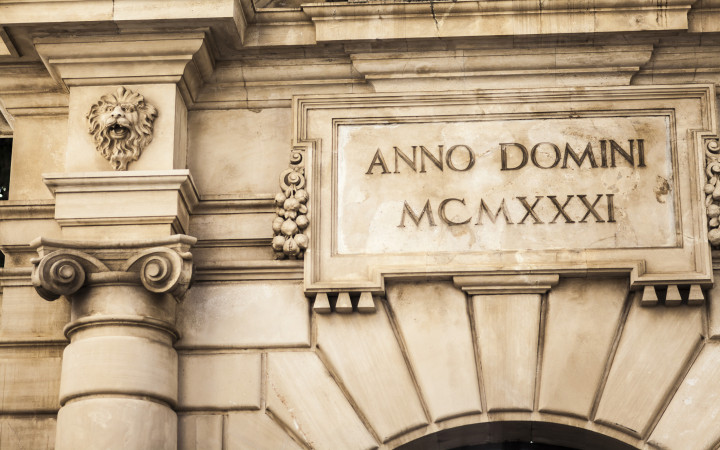Today’s Wonder of the Day was inspired by Amaan. Amaan Wonders, “What is AD and BC?” Thanks for WONDERing with us, Amaan!
What year are we living in? That seems like an easy question, doesn’t it? But like most things, the answer isn’t as straightforward as you may think. Many people would tell you this is the year A.D. 2020. Others might call it the year 2020 C.E. Some would say it’s the year 4718, 1441, or even 5780! It all depends on which of the world’s many calendars you’re reading.
Today, most countries use the Gregorian calendar as their civil calendar. That means it’s used for official purposes, like government and business. Established by Pope Gregory XIII in 1577, the Gregorian calendar marks years using the abbreviations B.C. and A.D.
What exactly do B.C. and A.D. stand for? B.C. stands for “Before Christ,” as in Jesus Christ. It indicates the number of years before the birth of Jesus (although Jesus himself was born in 4 B.C.). A.D. stands for the Latin phrase Anno Domini. That translates to “In the year of our Lord.” It’s used to mark years after the birth of Jesus.
Considering the Gregorian calendar was created by a pope of the Catholic Church, it makes sense that it tells time according to the birth of Christianity’s main religious figure. But what about all the people in the world who follow other (or no) religions? Do they still use B.C. and A.D.?
Often, the answer is yes. However, some people use the abbreviations B.C.E. and C.E. instead. B.C.E. means “Before the Common Era,” and C.E. means “Common Era.” They reference the same periods of time as B.C. and A.D. Still, many people feel that B.C.E. and C.E. are more secular and inclusive ways of telling time.
And, while most countries use the Gregorian calendar as their civil calendar, many still recognize other religious and cultural calendars as well. For instance, the Hebrew calendar, developed in 359 C.E., is a lunisolar calendar used by the nation of Israel and many Jews worldwide. On this calendar, we’re living in the year 5780.
There’s also the Islamic calendar, which is a lunar calendar. It starts in the year 622 C.E., which was when the prophet Muhammed moved to Medina. The Islamic calendar uses the abbreviation A.H., which means “year of the Hijra.” This calendar has 354 days, and it’s currently in the year 1441. Because the Islamic calendar is shorter than the Gregorian calendar, the two will one day be in the same year—in 20784 C.E.!
Have you ever celebrated the Chinese New Year? If so, you know it’s not on January 1. The Chinese calendar is lunisolar and goes back to the 14th Century B.C.E. This calendar also measures time in 60-year cycles. The year 2020 is the year 4718 on the Chinese calendar. It’s the 36th year in the current cycle.
And that’s not all! The Persian calendar is widely used in Afghanistan and Iran. The ancient Hindu calendar has changed to become several regional Indian calendars today. Cultural events in these countries often follow the Persian and Indian calendars.
Of course, many other calendars have fallen almost completely out of use. The Maya calendar is one of the most well-known, but the Roman calendar was also once widely used. And, during the French Revolution, people in France created a calendar that started over with the first year of their revolt. If it were still in use today, this year would be the an 228 de la Révolution!
Do you mark years with B.C. and A.D.? Do you use B.C.E. and C.E. instead? Whatever your preference, it’s fun to learn about other ways of telling time. And of course, the more calendars you learn about, the more holidays you will know about, too!
Standards: CCRA.R.4, CCRA.L.3, CCRA.L.6, CCRA.R.1, CCRA.R.2, CCRA.R.10, CCRA.W.2, CCRA.W.4, CCRA.SL.1




